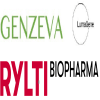Several leading Wall Street analysts are pegging Gilead Sciences and Galapagos' experimental rheumatoid arthritis treatment to emerge as a leader in a market now crowded with therapeutic options. But questions remain about when exactly their drug could reach patients.
Fresh clinical trial data has kept filgotinib at the leading edge of a class of drugs known as JAK inhibitors, despite being at least a year away from launch.
Other competitors have already hit the market or filed applications for rival therapies, such as AbbVie's bid to secure approval for its JAK blocker upadicitinib, which has seen clinical results generally similar to filgotinib.
The race to compete holds particular significance for both Gilead and Galapagos — the former searching for its next blockbuster hit, while the latter has out-licensed development elsewhere, focusing on filgotinib.
Executives at both companies hope the drug can pull off a tortoise-and-hare narrative. While filgotinib may come to market slower than others, strong efficacy and a clean safety profile could help it unseat those ahead of it — so goes, at least, the pitch from Wall Street boosters of the companies' chances.
A shifting market
The landscape has changed since BioPharma Dive's last overview of JAK inhibitors in April.
Eli Lilly won an OK for Olumiant (baricitinib) in June, giving Pfizer's Xeljanz (barictinib) a competitor in the drug class. A narrow indication and a black box warning, however, made for a weak label that could weigh on Olumiant's prospects.
Additionally, AbbVie plans to file a New Drug Application by year's end after reading out more data on upadacitinib, setting pace for a 2019 approval decision.
AbbVie's drug has now cleared five Phase 3 studies, including a head-to-head trial against Humira (adalimumab), and the pharma expects the JAK inhibitor to garner $3 billion in rheumatoid arthritis sales by 2025.
Pfizer, meanwhile, continues to reap the rewards of being first to market, with sales of Xeljanz cresting $1 billion in sales through the first nine months of 2018.
That leaves Gilead and Galapagos' filgotinib as the laggard.
Phase 3 data recently released — along with further clinical results expected in the first quarter of next year — underpin Gilead and Galapagos' plans to win U.S. regulatory approval by 2020.
Analysts have conceded its approval time could be an issue, with the possibility to be kicked further back. A Phase 2 study testing filgotinib for its safety related to sperm production still needs to recruit and run for 26 weeks, which Wall Street analysts expect to take some time to complete.
While filgotinib's data may be compelling, it remains to be seen how the armamentarium for rheumatoid arthritis and other inflammatory diseases evolves before the drug reaches market.
Currently, anti-TNF inhibitors remain dominant as an anti-inflammatory treatment, but one rheumatologist pointed out a key advantage with JAK inhibitors.
"Essentially, these are as effective and similar to biologic drugs from the past two decades, but taken in pill form," said Angus Worthing, a private practice rheumatologist in Washington, in an interview with BioPharma Dive.
Avoiding the black box
Pfizer's and Eli Lilly's JAK inhibitors may already be on market and posting annual sales growth, but the Food and Drug Administration hit both with black box warnings on their labels.
| Company | Drug | Jan. - Sept. 2018 sales | FDA-approved indication | FDA boxed warning |
|---|---|---|---|---|
| Pfizer | Xeljanz (tofacitinib) | $1.2 billion | Moderate-to-severe RA with inadequate response to methotrexate. Can be used as monotherapy or with DMARDs. | Serious infections such as tuberculosis and malignancies such as lymphoma. |
| Eli Lilly and Incyte | Olumiant (baricitinib) | $133 million* | Moderate-to-severe RA with inadequate response to one or more TNF antagonist therapies. Combination use not recommended | Serious infections such as tuberculosis, malignancies such as lymphoma, as well as thrombosis and pulmonary embolism |
| AbbVie | upadacitinib | Not on market | N/A | N/A |
| Gilead and Galapagos | filgotinib | Not on market | N/A | N/A |
*U.S. launch in Q2, virtually all European sales
For Lilly's Olumiant, the label not only highlights multiple safety concerns including thrombosis, but the approved usage only recommends it after a patient has tried one or more anti-TNF drugs. It also advises against using Olumiant in combinations.
Leading safety concerns for the class center around thromboembolism, white blood cell counts and increased lipid levels, Ana-Maria Orbai, an assistant professor of medicine in the rheumatology division at the Johns Hopkins University School of Medicine said in an interview with BioPharma Dive.
"And the biggest one with these medications is they act more broadly on the immune system," Orbai said. "They are closer to signal transduction, so they influence more pathways."
Perhaps the most important unknown facing AbbVie and Gilead is if they can walk away from an FDA decision with a better label, with the goal of avoiding a black box warning altogether.
Geoffrey Porges, a sell-side analyst for the investment bank Leerink, remarked after results from a study called FINCH-2 were announced in September that the drug's prospects looked more certain.
And after Gilead's third quarter earnings call, with more detailed data, Jefferies analyst Michael Yee remarked filgotinib showed lower thrombosis rates than its competition.
On that same call, though, Porges harkened back to lingering uncertainty around the drug's approval timeline, particularly with the Phase 2 safety trial as a gating factor.
"Gilead recognizes the price of this delay, in terms of their competitive position, and are taking all steps possible to accelerate enrollment," Porges stated in an Oct. 26 note. "The company seems likely to provide an update on the trial and the timing for regulatory submission in the first half of 2019."
How market share is divided between these four JAK inhibitors remains to be seen. While there are no direct comparator trials, all four have presented placebo-adjusted results after 12 weeks for patients with inadequate responses to disease-modifying anti-rheumatic drugs.

Additionally, data from FINCH 1 and FINCH 3 are expected in the first quarter of 2019, respectively testing filgotinib against Humira and in methotrexate naive patients.
The full data from these studies, particularly the safety profile with respect to deep vein thrombosis and pulmonary embolisms, will be critical for filgotinib.
And, regardless of the exact efficacy, safety is paramount, Orbai said.
"Safety is, for me, the biggest issue with these meds," she said. "I want to be convinced that we're not doing more harm than good for our patients."
Biosimilars: A competitive threat?
Biosimilars have the potential to change the market by making TNF inhibitor treatment more affordable.
Two copycats of Johnson & Johnson's Remicade (infliximab) are already on the market at discounts to the branded version as high as 35%.
The near future of biosimilars for the other two top TNF inhibitors, AbbVie's Humira and Amgen's Enbrel (etanercept), is less certain, however.
While AbbVie has inked deals with six Humira biosimilar makers to hold off U.S. entry until 2023, Boehringer Ingelheim has held out, locking legal horns with the pharma.
Amgen, meanwhile, remains engaged in a high-stakes trial with Novartis' Sandoz over an Enbrel biosimilar, with a decision likely in early 2019.
Biosimilar TNF inhibitors might present patients, payers and healthcare systems with a compelling choice, even if JAK inhibitors take stronger root.
"Biosimilars represent the most medically appropriate and politically feasible way to lower drug prices in the rheumatology space," the rheumatologist Worthing said.
Additionally, anti-TNF biosimilars could be adopted in combination therapies, Sheila Frame, the head of North American biopharmaceuticals for Novartis' Sandoz said in an interview with BioPharma Dive. She predicted the next massive therapy step change will likely include some type of combination.
"They are likely going to have to be combined with biosimilars," Frame said. "I know the JAK inhibitors tried with an anti-TNF, but they might try with a B-cell modulator or a T-cell receptor."
"The future is going to be in combinations," she concluded. "I think that still sustains the biosimilar marketplace."
BioPharma Dive reporter Jacob Bell contributed to this report.






















